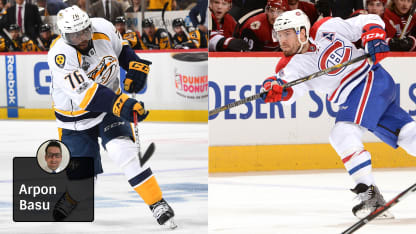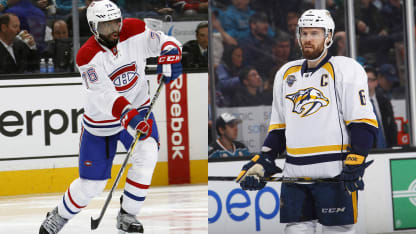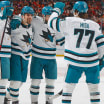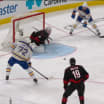It was by no means Weber's fault Montreal was knocked out in the first round of the playoffs, just as Subban did not single-handedly lead Nashville to the Final.
But optics can sometimes overpower reality. And the optics for the Canadiens in the playoffs were rough, with the Predators' run to the Final further polarizing fans in Montreal into their respective camps on the trade.
Last June 29, the reaction in Montreal was very similar to the one in Edmonton, which has a fan base that might be the most analytically inclined in the NHL. The Hall-for-Larsson trade, much like Subban-for-Weber, did not look good from an analytics perspective, but each trade suited what is sometimes viewed as an old-fashioned need, that of a shutdown defenseman.
Though there are Oilers fans who will never accept that trading from a position of strength to shore up a position of weakness was wise, at least not in this specific case, Edmonton's successful season helped lessen the blow.
Not only did the Oilers ride the Hart Trophy season of center Connor McDavid to their first playoff appearance since 2006, they came within one win of reaching the Western Conference Final, losing 2-1 to the Anaheim Ducks in Game 7 of the second round.
Larsson came as advertised, solidifying a questionable defense and playing difficult minutes.
The Devils finished last in the Eastern Conference at 28-40-14, but Hall tied Kyle Palmieri for the Devils scoring lead with 53 points (20 goals, 33 assists) in 72 games.
So for now, at least, the Hall-for-Larsson trade has seemingly made each team and its fans happy, for the most part. The Oilers are on an upward trajectory, and the Devils were widely considered the winners of the trade.
There shouldn't be any lingering disappointment from the events of June 29 in Toronto, either, where the possibility of the Maple Leafs signing Stamkos, only to have him stay with the Lightning, is a distant memory. Stamkos played 17 games but missed the rest of the season after tearing the lateral meniscus in his right knee on Nov. 15. He scored 20 points (nine goals, 11 assists) for the Lightning, who did not make the playoffs.
Meanwhile, forwards Auston Matthews, Mitchell Marner and William Nylander helped push the Maple Leafs into the playoffs for the first time since 2013 and the second time since 2004.
There is real optimism in Toronto, and Stamkos not being there not only isn't a problem, it should make it easier for the Maple Leafs to keep their core together under the NHL salary cap.
Just one aftereffect of a wild day, one year ago.



















